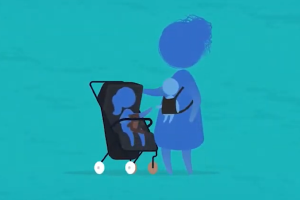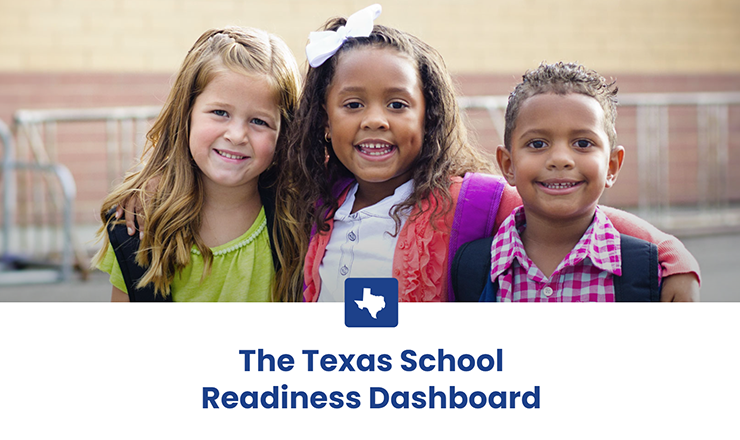Last Thursday, October 12, the Prenatal-to-3 Policy Impact Center hosted our fourth annual Research to Policy Summit. We shared the many ways state policy choices impact families, demonstrated these impacts through our simulation of a family of three in different states, detailed the most effective policies states can employ to help children thrive from the start, and summarized the progress states have made this year toward implementing effective policies. And of course, we released our 2023 Prenatal-to-3 State Policy Roadmap.
Policy impacts came to life through our panel of three state leaders, who made inspiring contributions to their states’ efforts—and success—to support children and their families in the prenatal-to-3 period. Reflecting on this year’s Summit, I will share with you four of my major takeaways.
#1 - State Policy Choices Matter
Early in the Summit, our founder and executive director, Dr. Cynthia Osborne, shared real-life examples of how state policy choices impact families and their resources.
“Your policy choices can make the difference between a child living in poverty or thriving, a family having access to health care or going without in a time of need, a child being hungry or well-fed, or a parent creating nurturing connections with their child or being stressed and unable to engage with their newborn,” said Osborne.
The consequences of state policy choices became clear in the story of Lina, a character who demonstrates the variation in resources available to a family across all 50 states and the District of Columbia. Our simulation of Lina’s resources compares earned income and other benefits (e.g., SNAP, WIC, tax credits) alongside taxes owed and child care costs. This year, we also included state paid family leave (PFL) benefits to understand how these programs impact family resources.
Lina is a single mother with an infant and a toddler, and she works full time at the state’s minimum wage. Stark differences emerge in what life is like for Lina across state lines.
In the District of Columbia—which provides generous child care subsidies, a $15 minimum wage, PFL, and both a state earned income tax credit and child tax credit—Lina has more than $47,000 available to meet her families’ needs through her earned income and other benefits.
By stark contrast, in Texas, where I live, Lina would only have $28,534. Her family would struggle in the Lone Star State, but not because of her individual choices. Texas does not have PFL, a state earned income tax credit, or a child tax credit, and Lina would make the federal minimum wage of $7.25.
Lina would have the fewest resources available in Georgia, which has similar policies to Texas but much higher child care fees. Georgia’s state policy choices leave Lina with just $20,261 to support her family, despite working full time.
“Lina’s stories illustrate how state policy choices combine to ensure a minimal level of resources for families, which has a huge impact on child and family outcomes and community wellbeing today and over the long term,” said Osborne.

What level of resources does a single parent with an infant and a toddler have to provide for their children in your state?
#2 - Paid Family Leave Drastically Affects Family Resources
This year, we added PFL to Lina’s story. As a mother, I found that addition especially meaningful. To me, the impact of leave policies on a family’s resources really drives home the impact of state policy choices.
Take Oregon, for example. Oregon just began implementing PFL in September 2023. If Lina lived in Oregon, gave birth to her infant today, and took off 12 weeks of work to recover from child birth and bond with her new baby, she would have $6,480 more dollars in her pocket at the end of this year than if she had given birth before their PFL program began.
When a new baby enters a family, the family budget changes drastically. A newborn means new expenses for diapers, clothes, and food. Hospital bills arrive. And child care costs are looming in the future for the majority of parents. What a difference $6,480 could make! Those extra resources would allow a family time off work to get to know their newest member and take care of the birthing parent’s physical and mental health without sacrificing financial wellbeing.
#3 - State Policy Progress is Possible—and Is Happening All Over!
At the Summit, we heard from an incredible panel of leaders from Vermont, North Carolina, and Minnesota championing policies that support children to thrive from the start:
- Aly Richards is the CEO of Let’s Grow Kids in Vermont. Aly and Let’s Grow Kids, along with 40,000 supporters within the states’ Child Care Campaign, passed the 2023 Child Care Bill into law.
- Matt Gross is the Assistant Secretary of Government Affairs at the North Carolina Department of Health and Human Services. He spent the last 7 years investing in what culminated in the passage of Medicaid expansion this year.
- Debra Fitzpatrick is the Director of Policy and Research at the Children’s Defense Fund of Minnesota. She led her coalition’s work to advance a statewide paid family and medical leave policy this year.
Each of these incredible panelists shared insight and experiences from their work championing policy progress in their state. What I found most impactful in their stories is, first, an important reminder that major progress is happening across the country to enact and implement effective state policy solutions. And this progress improves the lives of the youngest children and their families in real, tangible ways.
For more detail on state successes, here’s the video of the Summit:
Click here to skip ahead to 59:18 min. – Championing Change: Celebrating States’ 2023 Legislative Victories
#4 - Policy Progress Is a Team Effort—Families, Advocates, Businesses, and Policymakers All Contribute
Second, the similarities in the work of each of these leaders and their coalitions provide a hopeful look to the future. The panelists spoke of the important role that grassroots coalition building played in generating the will to act in these key policy areas. And they explained how sustained community involvement helped build the support needed to get the legislation across the finish line.
The panelists also spoke of the vital influence of the business community in recognizing that supporting families means empowering their employees to come to work, stay in their jobs, and contribute their best. Panelists emphasized the pivotal importance of bipartisan support, uniting across the aisle to enact policies that research clearly demonstrates can help children to get off to a healthy start—a goal we all share.
The 2023 Prenatal-to-3 Research to Policy Summit left me excited and hopeful for the year ahead. We have so much work to do. But we know that state policy choices matter, and we see states across the country taking actions to implement the policies we know will support families.




